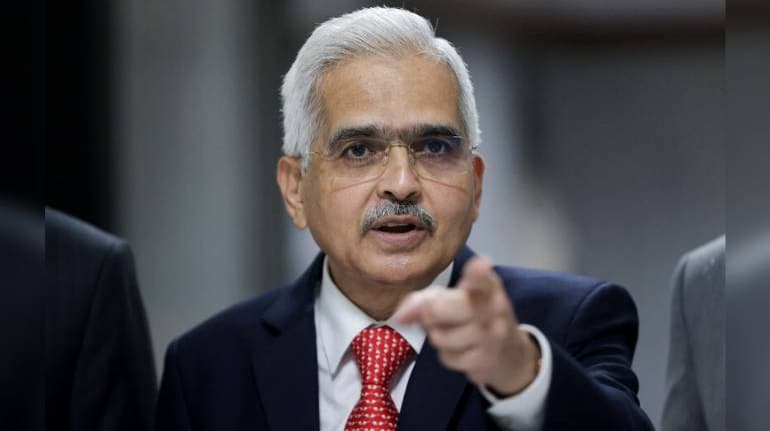



The August meeting of the Reserve Bank of India (RBI)’s monetary policy committee (MPC) takes place against yet another challenging backdrop. On the global arena, inflation stays elevated despite somewhat softer food and industrial commodity prices, continued uncertainties around energy prices, and downward surprises in activity, confidence and labour market indicators.
Systemically important central banks are hiking rates, including a cumulative 150 basis points hike in the policy rate by the US Federal Reserve since the RBI’s MPC meeting in early June.
Even though the US Fed hiked the policy rate aggressively and is expected to hike further in the near future, street expectation of rate cuts by the Fed in 2023 has become materially stronger in recent weeks, as reflected in US swap rates. Thus, the current global policy rate cycle looks set to deliver faster-than-usual hikes, albeit with the possibility of an unusually quick reversal.
Against the tricky global economic and geopolitical backdrop, the MPC also surprised with larger than expected front-loaded moves during the summer. Admittedly, the MPC cannot ignore that CPI inflation at around 7 percent is ruling above the central bank’s upper tolerance band of 6 percent for over two quarters. Accordingly, another sizeable hike in the repo rate (say by 35-40 basis points) later this week is a strong possibility, which will take the key policy rate to 5.25 percent or higher, and would mean a cumulative hike of about 125 basis points in a span of three months since May 2022.
While this is by far the fastest pace of rate hikes in India in recent years, a key question is where the terminal repo rate might reach in the current cycle. In this context, here are a few important points. First, for the part of assets books of the banking system that reflects external benchmark linked rates (EBLR) — which is over 40 percent now as against sub-5 percent in the previous hiking cycles — the pass through is nearly instantaneous and complete. This is a key development, and will likely have a meaningful bearing on the central bank’s rate action in the current hiking cycle.
Second, given that monetary policy takes effect with a lag, one feels that the H2FY23 inflation expectation is of critical importance. One expects relatively less risk to the RBI’s current forecast for average CPI inflation of 6.7 percent during 2022-23, and the headline inflation may settle at sub-6 percent levels by March 2023, barring further unforeseen shocks.
Likely softer growth in the global economy in the coming months, no fresh surge in global commodity prices and geopolitical uncertainties, a favourable weather condition in India are some of key assumptions behind this forecast.
Taking such factors into account, one expects the RBI’s terminal rate in the current cycle can be around 5.75 percent, with a modest downside bias. During 2020 also, the MPC led by Governor Shaktikanta Das front-loaded the COVID-19-induced easing with two consecutive huge repo rate cuts of 75bps and 40bps, respectively, in March and May before holding the same steady for the next two years. Interestingly, the current cycle of rate hikes has also started with large and front-loaded moves, much in contrast to RBI’s ‘baby step’ hikes during 2010 and 2011.
Even if the current approach means a somewhat slower recovery immediately, the central bank stays focused on financial stability and long-term sustainability of growth. Finally, while pressure of not falling completely out of sync with the global cycle for an emerging market central bank cannot be denied, one needs to recognise that the deviation in case of inflation and GDP growth from their respective trend-lines in the US is much more pronounced than in India at the moment.
Considerable newsprint was spent of late to discuss the likely path for the Indian currency in the coming months. While the psychological mark of 80 against the USD was hit in July, one cannot ignore that amid a generalised dollar strengthening across most currencies globally in recent months, the weakening of INR against the USD was relatively less compared with most peers.
On a more fundamental front, India’s average monthly trade deficit will likely be lower in H2 of 2022-23 than the unusually elevated level witnessed during the first half. The FII outflow from Indian assets during the first half of 2022-23 will likely not be repeated in H2. Furthermore, policymakers seem to be alert with a prudent stance and multi-pronged approach to contain unwarranted volatility in the currency market.
The RBI is not only using a part of its sizeable forex portfolio to support the rupee, several other policy initiatives on the part of both RBI and the government (eg., measured trade restrictions, INR settlement in external trade, greater flexibility for banks as regards non-resident deposits) should also help materially in the coming months in containing INR weakness.
Overall, there had been no shortage of complexities of a varied nature for the Indian economy since the breakout of the Russia-Ukraine war in February. Nevertheless, policymakers dealt the situation decisively, and proactively. While a quick turnaround in growth recovery in the near term is unlikely, one expects the other macro headwinds (eg., surging commodity prices and inflation, widening trade deficit, spike in global central bank rates, cross-currency volatility) to soften meaningfully over the next 2-3 quarters, offering better prospects for the financial markets, and greater degrees of freedom for policymakers than in recent months.
(Rahul Goenka assisted in this article)
Siddhartha Sanyal is Chief Economist & Head of Research, Bandhan Bank. Views are personal, and do not represent the stand of this publication.
Discover the latest Business News, Sensex, and Nifty updates. Obtain Personal Finance insights, tax queries, and expert opinions on Moneycontrol or download the Moneycontrol App to stay updated!
Find the best of Al News in one place, specially curated for you every weekend.
Stay on top of the latest tech trends and biggest startup news.